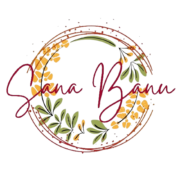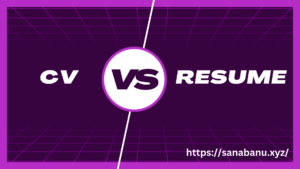CV or Resume: What’s the Difference?
CV or Resume: What’s the Difference?
Introduction:
In today’s competitive job market, job seekers often encounter the dilemma of whether to prepare a Curriculum Vitae CV or resume. These documents, though both instrumental in job applications, serve distinct purposes and cater to different professional domains. Understanding differences, structures, and appropriate use between CV or resume is crucial for presenting one’s qualifications effectively in job searches.
Comprehensive Insight into the CV or Resume: What’s the Difference?
The Curriculum Vitae, commonly known as a CV, is a comprehensive and extensive document providing an in-depth overview of an individual’s academic history, research pursuits, publications, education, and professional experiences. CVs find prevalent use in academic, scientific, or research-oriented fields where an exhaustive account of one’s academic and professional journey is essential.
difference in Structure and Content between CV or resume:
Structure and Content of a CV:
A CV tends to be more expansive than a resume, often spanning multiple pages to accommodate an exhaustive detail of an individual’s qualifications and experiences. It typically includes the following sections:
- Personal Information: Contact details, name, address, phone number, email.
- Education: Academic qualifications, degrees, institutions attended, dates.
- Research Experience: Details of research projects, publications, presentations, conferences attended.
- Professional Experience: Relevant work experience, internships, academic positions held.
- Awards, Honors, and Affiliations: Recognitions, awards, memberships in professional organizations.
- References: Sometimes included, with contact information of academic or professional references.
Defining the Resume:
In contrast to a CV, a resume is a concise and targeted document, succinctly summarizing an individual’s work experience, skills, achievements, and qualifications relevant to a specific job application. Resumes are tailored to highlight qualifications specifically aligned with the job being applied for.
Structure and Content of a Resume:
A resume is typically shorter in length, usually ranging from one to two pages, presenting key qualifications succinctly. Key sections in a resume include:
- Contact Information: Name, address, phone number, email.
- Objective or Summary Statement: Optional but provides a brief overview of career goals or professional summary.
- Work Experience: Job history, positions held, responsibilities, achievements.
- Skills: Technical skills, language proficiency, certifications relevant to the job.
- Education: Academic qualifications, degrees, certifications, relevant coursework.
Key Differences Between CV or Resume:
There are so many difference between CV and resume. which are given below
1. Length and Depth: (CV or resume)
- A CV is detailed and lengthy, allowing for an extensive overview of academic and professional experiences.
- A resume is brief and concise, focusing on key qualifications and experiences relevant to a particular job.
2. Purpose and Application:(CV or resume)
- CVs are commonly used in academia, research, or scientific fields, where showcasing comprehensive academic history and research is essential.
- Resumes are widely used across various industries and job applications, emphasizing relevant work experiences, skills, and achievements.
3. Content Focus: (CV or resume)
- CVs highlight academic achievements, research contributions, publications, and scholarly endeavors.
- Resumes emphasize professional experiences, skills, accomplishments, and qualifications tailored to the targeted job role.
4.Flexibility: (CV or resume)
- CV: Less flexible, tends to maintain a consistent format, and is more comprehensive.
- Resume: More adaptable, allowing customization and modification based on the job requirements or industry standards.
5.Tailoring:(CV or resume)
- CV: Usually remains static and comprehensive, reflecting an individual’s entire career.
- Resume: Tailored for each job application, highlighting specific skills and experiences relevant to the job description.
6.Usage:(CV or resume)
- CV: Common in countries like the UK, Europe, Asia, and for academic and research-oriented positions globally.
- Resume: Standard in the United States and often used for most job applications in the private sector.
7.Sections:(CV or resume)
- CV: May include sections like personal information, education, research experience, publications, presentations, awards, grants, professional memberships, conferences attended, etc.
- Resume: Typically includes sections like contact information, summary/objective, work experience, skills, education, certifications, and sometimes additional sections like volunteer work or relevant hobbies.
8.Chronological Emphasis: (CV or resume)
- CV: In a CV, the emphasis is on listing experiences in reverse chronological order, placing more importance on an individual’s complete history, including publications, research, and academic achievements.
- Resume: It emphasizes work experience in a reverse chronological format, focusing on the most recent and relevant positions to the job applied for. It may also include a skills-based or functional format to highlight specific skills if needed.
9.Objective: (CV or resume)
- CV: It might include a personal statement or objective, which outlines career goals and motivations.
- Resume: Often includes a career summary or objective, which is a concise overview of an applicant’s qualifications and career goals as they pertain to the specific job.
10.Length of Work Experience Details: (CV or resume)
- CV: Provides detailed descriptions of roles, responsibilities, and accomplishments for each position held, including academic and research experiences.
- Resume: Offers succinct summaries of job responsibilities and achievements, focusing on relevance to the job being applied for.
11.Customization and Adaptability:(CV or resume)
- CV: Less adaptable to different job roles due to its comprehensive nature, but can be tailored by rearranging sections or emphasizing specific experiences.
- Resume: Highly adaptable and customizable to match the job requirements by highlighting relevant skills and experiences, making it more effective for diverse job applications.
12.Usage in Different Countries: (CV or resume)
- CV: Commonly used terminologies, formats, and preferences vary across countries. In some regions like the UK, Europe, and Asia, the term CV is more prevalent and typically refers to a more comprehensive document.
- Resume: More commonly used in the United States and Canada, representing a shorter document focusing on work experience and skills.
Choosing the Right Document CV or Resume:
Determining whether to use a CV or resume depends on several factors:
-
- Industry Norms:
- CV: If you’re in academia, research, scientific fields, or applying for international positions, a CV is often expected due to the need to detail extensive academic and professional accomplishments.
- Resume: For most other industries, such as business, marketing, IT, healthcare, etc., a resume is the standard document for job applications.
- Job Requirements:
- CV: If the job posting or industry values comprehensive details of academic achievements, research experience, publications, and presentations, a CV might be more appropriate.
- Resume: If the job requires a concise summary of relevant work experience, skills, and qualifications tailored to the specific job description, a resume is preferable.
- Career Stage:
- CV: Typically used by individuals with extensive work experience, advanced degrees, or substantial accomplishments in academia or research.
- Resume: Suitable for professionals at various career stages, from entry-level to mid-career and even experienced individuals in non-academic or research-based roles.
- Geographical Considerations:
- CV: Commonly used terminologies and document preferences vary by country. Research the expectations and standards within your country or the country where you’re applying for jobs.
- Resume: In the United States and Canada, resumes are the standard, while CVs are more common in the UK, Europe, and certain other regions.
- Job Application Specifics:
- CV: Use a CV if the job application explicitly requests a CV or if the industry or company norms lean towards comprehensive documentation.
- Resume: Use a resume if the job description emphasizes specific skills, experiences, and qualifications relevant to the position.
- Flexibility and Customization:
- CV: Less flexible due to its comprehensive nature, but sections can be emphasized or reorganized to tailor it slightly for different applications.
- Resume: Highly adaptable and easily customizable, allowing you to highlight the most relevant skills and experiences for each job application.
- Industry Norms:
Conclusion:
In essence, while both a CV and a resume serve as crucial tools in job applications, their distinct purposes and formats cater to different professional settings. Understanding the differences between these documents empowers individuals to craft and submit the appropriate document to highlight their qualifications effectively. By comprehending when to use a CV versus a resume and tailoring each document to the respective industry’s expectations, individuals can significantly enhance their chances of making a strong and relevant impression in the job market. Clarity on the appropriate use of CVs and resumes is key to successfully navigating the job application process and securing career opportunities aligned with one’s qualifications and aspirations.
Another interesting blog you can check it out here
A Curriculum Vitae (CV) is a comprehensive document that provides an in-depth overview of an individual’s academic and professional history, including education, research, publications, presentations, awards, and more.
A resume is a concise document highlighting an individual’s relevant work experience, skills, education, and achievements tailored for a specific job application
Can I use both a CV and a resume?
Yes, it’s common for individuals to have both a comprehensive CV and a tailored resume. You can modify and adjust each document according to the job requirements and industry standards.


